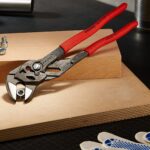If your vacuum cleaner’s lost its suction power or is making unusual noises, the culprit might be a worn or broken belt. Changing the vacuum belt is a simple yet crucial maintenance task that can restore your vacuum’s performance and extend its lifespan. With just a few tools and a bit of know-how, you can tackle this repair yourself and save money on professional services.
Understanding Vacuum Belts
Vacuum belts play a crucial role in how your vacuum cleaner functions. Familiarizing yourself with their maintenance can enhance your vacuum’s efficiency and extend its lifespan.
Importance of Maintaining Your Vacuum
Maintaining your vacuum ensures optimal cleaning performance. A well-maintained vacuum can improve suction power, reduce energy consumption, and minimize the risk of breakdowns. Regular checks on components like the vacuum belt help catch issues early, preventing costly repairs or replacements. Investing a little time in maintenance can significantly enhance the longevity of your appliance.
Signs of a Worn-Out Belt
Recognizing signs of a worn-out belt is essential for maintaining vacuum performance. Here are key indicators:
- Reduced Suction: Noticeably lower suction power indicates that the belt may be slipping or broken.
- Unusual Noises: Grinding or squeaking sounds can signify that the belt is strained or misaligned.
- Visible Wear: Cracks, fraying, or discoloration on the belt suggest it’s nearing the end of its lifespan.
- Burning Smell: A burnt rubber odor can indicate that the belt has overheated, necessitating immediate replacement.
Identifying these signs promptly allows for timely belt replacement, ensuring your vacuum operates as intended.
Tools and Materials Needed
Changing a vacuum belt requires specific tools and replacement parts. Gathering these items before starting the repair ensures a smooth process.
Common Tools Required
- Screwdriver: A flathead or Phillips screwdriver is essential to remove the vacuum cleaner’s cover.
- Wrench: A wrench may help loosen or tighten any bolts related to the belt assembly.
- Scissors: Scissors assist in cutting any worn belts if necessary.
- Pliers: Pliers can be useful for pulling and adjusting the belt during installation.
- Flashlight: A flashlight helps you see the working area better, especially in tight spaces.
Recommended Replacement Belts
- Type A Belts: These are common for many upright vacuum cleaners, providing standard durability and performance.
- Type B Belts: Designed specifically for certain models, these belts offer enhanced flexibility for better suction.
- Type C Belts: These belts are ideal for canister vacuums, designed to withstand higher tension.
- Universal Replacement Belts: Multipurpose belts fit various vacuums, ensuring a quick fix for different models.
Make sure to verify the specific requirements of your vacuum model when selecting a replacement belt. Always refer to the manufacturer’s guidelines for compatibility.
Step-by-Step Guide on How to Change a Vacuum Belt
Changing a vacuum belt is a manageable task that enhances your cleaner’s performance. Follow these steps closely for a successful belt replacement.
Preparing Your Vacuum Cleaner
- Unplug the vacuum cleaner: Disconnect the power cord from the outlet to ensure safety during repair.
- Clear a workspace: Find a clean, well-lit area to work, placing the vacuum on a stable surface.
- Gather tools: Collect necessary tools, including a screwdriver, wrench, pliers, and scissors. Having these items ready speeds up the process.
- Refer to the manual: Check your vacuum’s manual for specific instructions related to your model, ensuring compliance with manufacturer guidelines.
Removing the Old Belt
- Access the belt compartment: Locate and remove screws or clips securing the vacuum’s bottom cover. Set these aside for reassembly.
- Take off the brush roll: Disconnect the brush roll by releasing any fasteners or tabs holding it in place. This allows easy access to the belt.
- Remove the old belt: Gently slide the old belt off the motor shaft and brush roll. Examine the belt for signs of wear or damage as you remove it.
Installing the New Belt
- Position the new belt: Place the new belt around the motor shaft first. Then, stretch it around the brush roll.
- Align the brush roll: Ensure the brush roll is properly aligned with the belt and firmly secured in its bracket.
- Test the movement: Turn the brush roll by hand to confirm the belt moves freely without obstruction.
Reassembling the Vacuum
- Replace the bottom cover: Position the vacuum’s bottom cover back in place, lining up any clips or screw holes.
- Secure with screws: Reinsert and tighten screws to secure the cover. Be careful not to overtighten, which can damage the plastic.
- Plug in the vacuum: Reconnect the power cord to an outlet. Check that everything is functioning correctly before regular use.
By following these steps, you ensure your vacuum runs efficiently with a new belt. Regular maintenance keeps your device in optimal condition.
Tips for Ongoing Maintenance
Maintaining your vacuum cleaner ensures its longevity and effectiveness. Regular care of the vacuum belt and cleaning the device significantly enhances performance.
Regular Inspection of the Belt
Inspect the vacuum belt every month for signs of wear. Check for fraying, cracking, or stretching. If the belt shows any damage, replace it immediately to prevent further issues. Additionally, monitor the vacuum’s performance; reduced suction or strange noises may indicate a belt problem. Staying proactive with these inspections helps maintain optimal functionality.
Cleaning the Vacuum to Extend Belt Life
Clean your vacuum regularly to prevent debris buildup that can wear down the belt. Remove hair, dust, and dirt from the brush roll and belt area. Clear vents and filters to maintain airflow, reducing strain on the belt. A clean vacuum operates more efficiently, extending the life of the belt and other components. Establish a monthly cleaning routine to ensure your vacuum remains in top shape.
Conclusion
Changing your vacuum belt is a simple yet impactful task that can significantly enhance your vacuum’s performance. By staying vigilant and recognizing the signs of wear, you can prevent larger issues down the line. Regular maintenance not only saves you money but also ensures your vacuum operates at peak efficiency.
Taking the time to inspect and replace the belt as needed will extend the life of your vacuum. Remember to keep your vacuum clean and free of debris to reduce strain on the belt. With these practices in place, you’ll enjoy a cleaner home and a more reliable vacuum for years to come.


